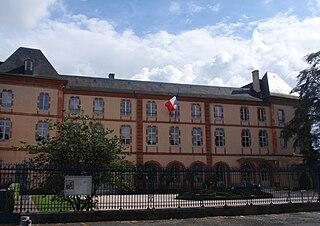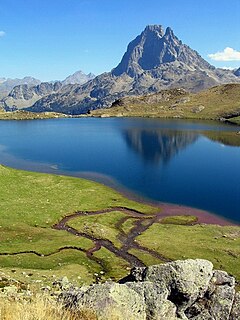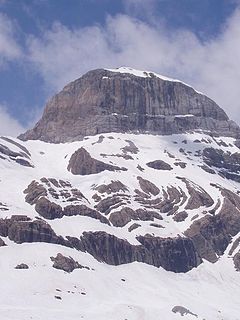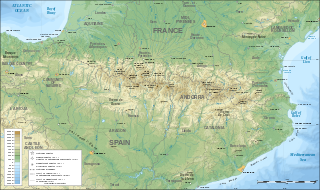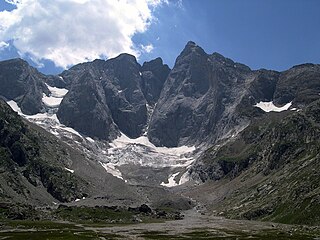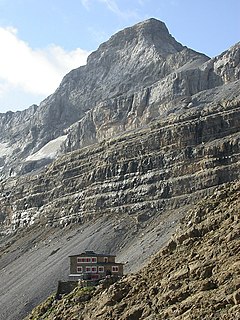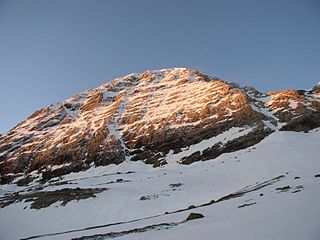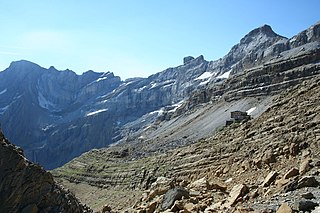| Épaule du Marboré | |
|---|---|
De gauche (est) à droite (ouest) : pic du Marboré, pic de la cascade oriental, pic de la cascade central ou pic Brulle, pic de la cascade occidental, épaule du Marboré, tour du Marboré, casque du Marboré, et refuge des Sarradets. Au centre, cascade de Gavarnie. Voir encadrements des photographies n°1 et n°2 sur Commons. | |
| Highest point | |
| Elevation | 3,073 m (10,082 ft) |
| Prominence | 15 metres (49 ft) |
| Listing | List of Pyrenean three-thousanders |
| Coordinates | 42°41′07″N0°00′00″E / 42.68528°N 0.00000°E Coordinates: 42°41′07″N0°00′00″E / 42.68528°N 0.00000°E [1] |
| Geography | |
| Location | France — Spain |
| Région Communauté | Midi-Pyrénées Aragon |
| Département Province | Hautes-Pyrénées Huesca |
| Parent range | Massif du Mont-Perdu (Pyrenees) |
| Climbing | |
| First ascent | August 12, 1891 by Henri Brulle, C. Passet and François Bernat-Salles |
Épaule du Marboré is a pyrenean summit, culminating at 3,073 m (10,082 ft) in the Monte Perdido Range, marking the Franco-Spanish border. It lies on the Greenwich meridien.

The Pyrenees is a range of mountains in southwest Europe that forms a natural border between Spain and France. Reaching a height of 3,404 metres (11,168 ft) altitude at the peak of Aneto, the range separates the Iberian Peninsula from the rest of continental Europe, and extends for about 491 km (305 mi) from the Bay of Biscay to the Mediterranean Sea.
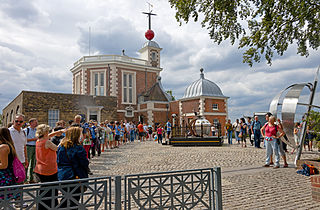
A prime meridian, based at the Royal Observatory, Greenwich, in London, England, was established by Sir George Airy in 1851. By 1884, over two-thirds of all ships and tonnage used it as the reference meridian on their charts and maps. In October of that year, at the behest of US President Chester A. Arthur, 41 delegates from 25 nations met in Washington, D.C., United States, for the International Meridian Conference. This conference selected the meridian passing through Greenwich as the official prime meridian due to its popularity. However, France abstained from the vote, and French maps continued to use the Paris meridian for several decades. In the 18th century, London lexicographer Malachy Postlethwayt published his African maps showing the "Meridian of London" intersecting the Equator a few degrees west of the later meridian and Accra, Ghana.








